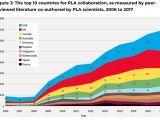Mike Burgess, the Australian Signals Directorate (ASD) director general, explained why the Australian federal government decided to ban Chinese companies ZTE and Huawei from providing equipment to Australia’s 5G network.
As stated by Australia's foreign affairs minister Marise Payne, the ban was not explicitly targeting Huawei and ZTE, but it would automatically affect any companies suspected to be a potential danger to Australia’s national security.
The two companies are both backed by the Chinese state and, although they are top tech global companies, they have a history of being accused of acting as no more than tools for Chinese intelligence services.
Burgess told the audience attending the Australian Strategic Policy Institute’s (ASPI) national security dinner on October 29 in Canberra that "Historically, we have protected the sensitive information and functions at the core of our telecommunications networks by confining our high-risk vendors to the edge of our networks."
"But the distinction between core and edge collapses in 5G networks. That means that a potential threat anywhere in the network will be a threat to the whole network."
Furthermore, as discovered by South China Morning Post, the Australian Strategic Policy Institute (ASPI) managed to find out that roughly 2500 Chinese engineers and scientists with affiliations to the People’s Liberation Army (PLA) studied in universities outside China since as far as 2007.
Around 300 Chinese scientists with People’s Liberation Army connections studied in Australian universities since 2007
"Approximately 500 Chinese military scientists were sent to each of the UK and the US, roughly 300 each to Australia and Canada and more than 100 each to Germany and Singapore," said ASPI researcher Alex Joske in a report analyzing the PLA's collaboration with various foreign universities.
Although the vast majority of the scientists that were affiliated with the Chinese PLA were not actually hiding this connection, Joske's analysis said that “Dozens of PLA scientists have obscured their military affiliations to travel to Five Eyes countries and the European Union, including at least 17 to Australia, where they work in areas such as hypersonic missiles and navigation technology. "
Despite obvious drawbacks of having PLA affiliates infiltrated in the academic environment which could potentially steal technology and collect intelligence while overseas, there are also some benefits.
Unfortunately, the risks are too significant and outweigh the long list of benefits, and according to Joske "The Australian Government, for example, can do more to work in partnership with our research sector to advance scientific progress while protecting national security and ensuring that relevant research doesn’t advance the Chinese military’s capabilities."

 14 DAY TRIAL //
14 DAY TRIAL // 
